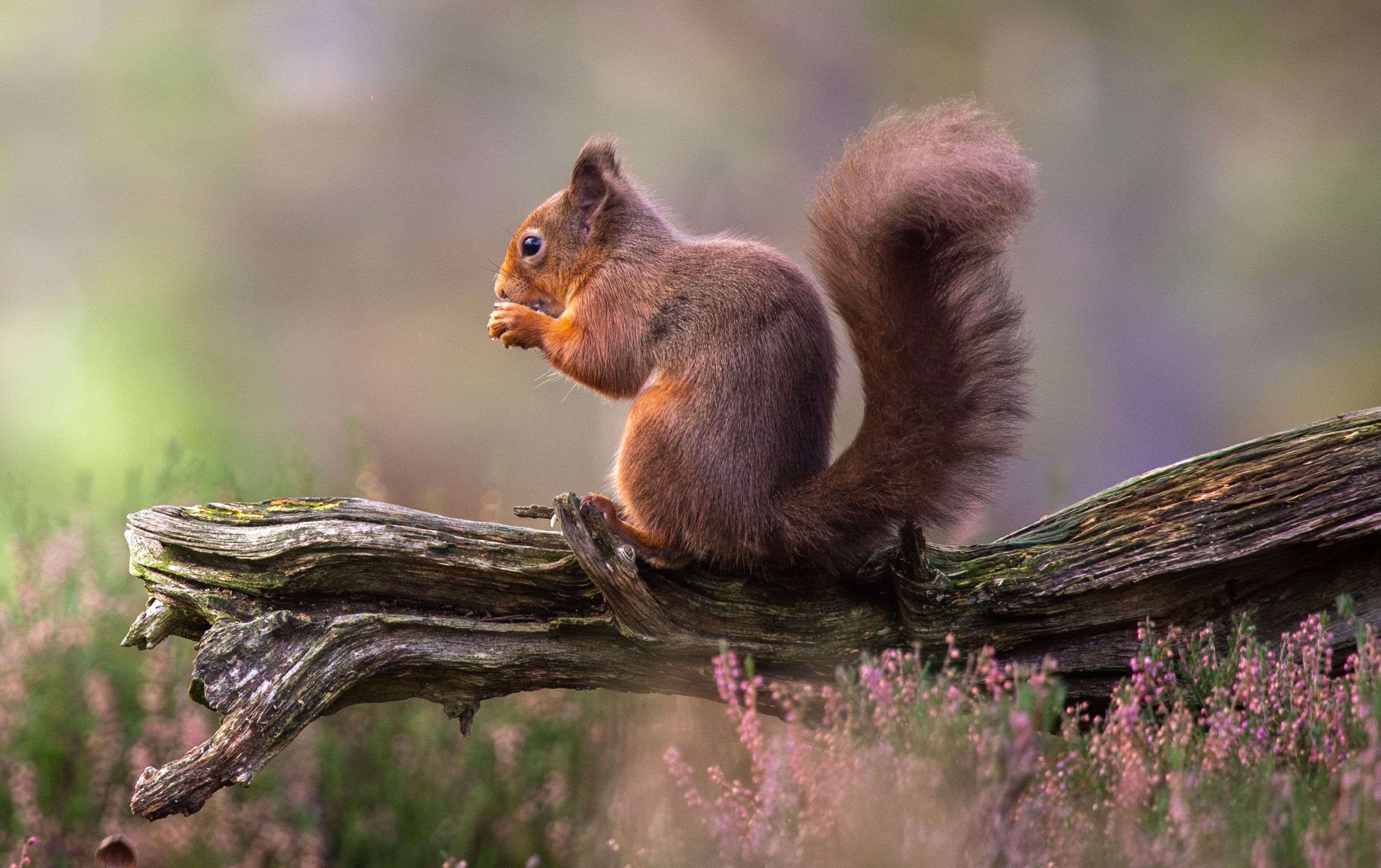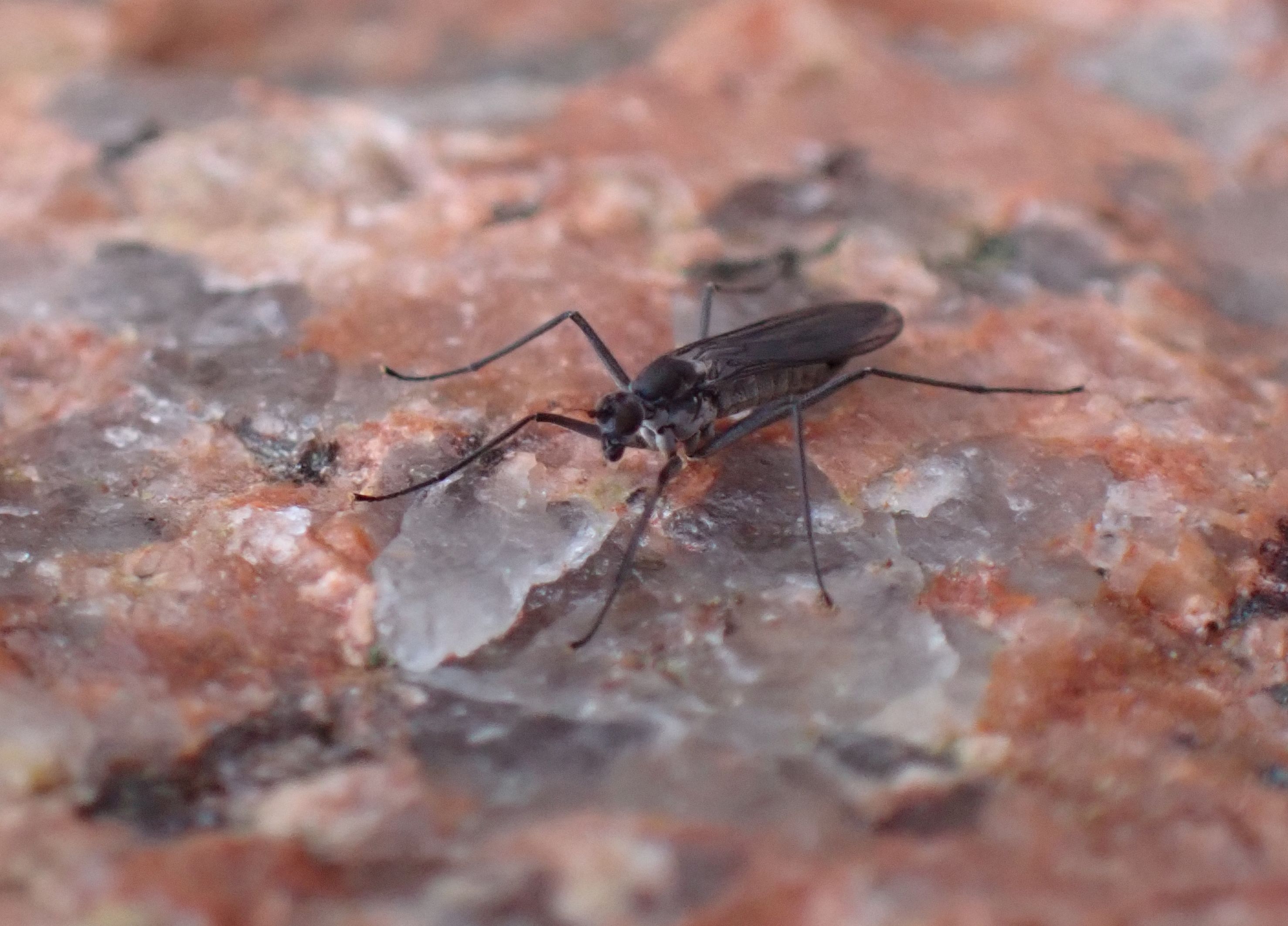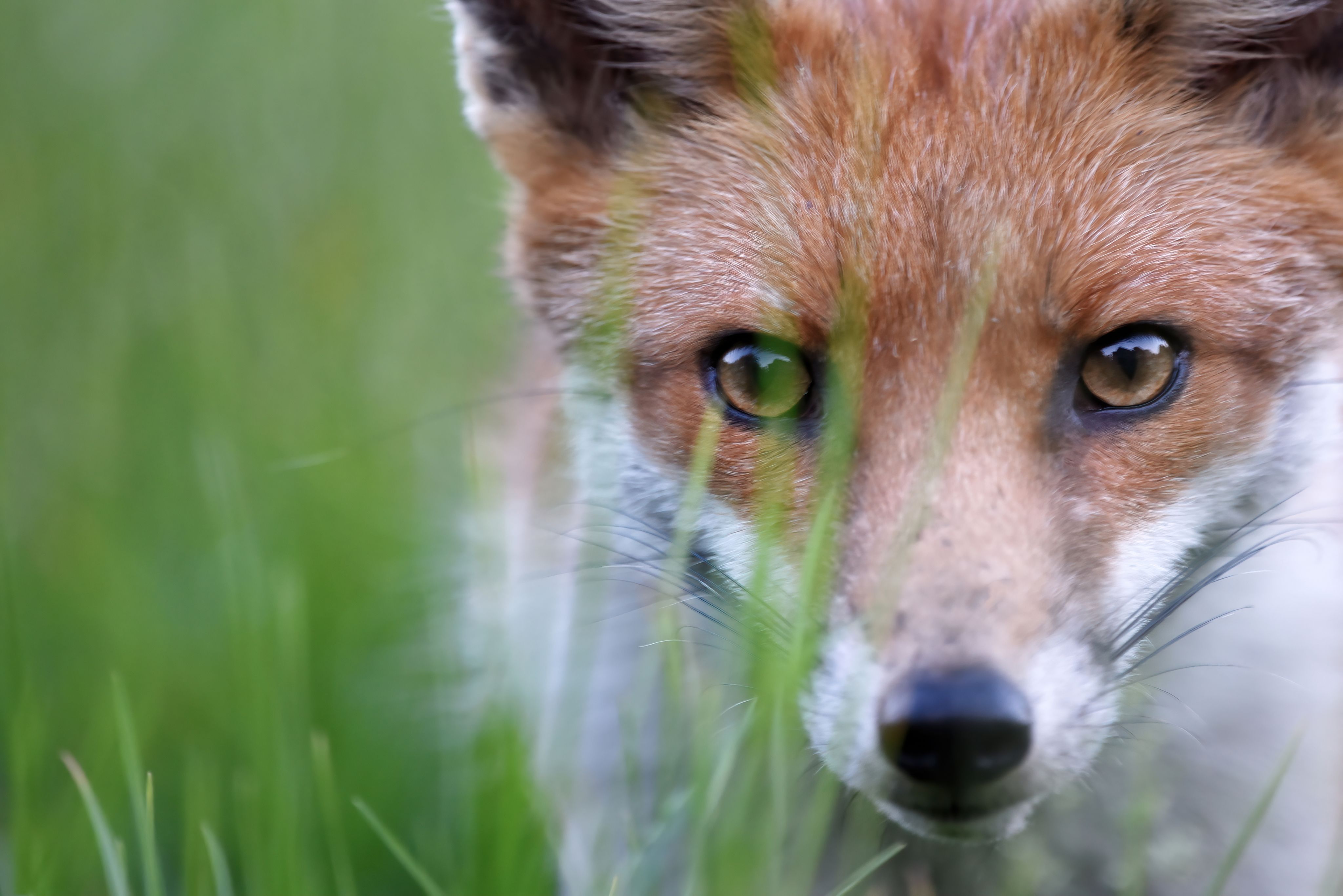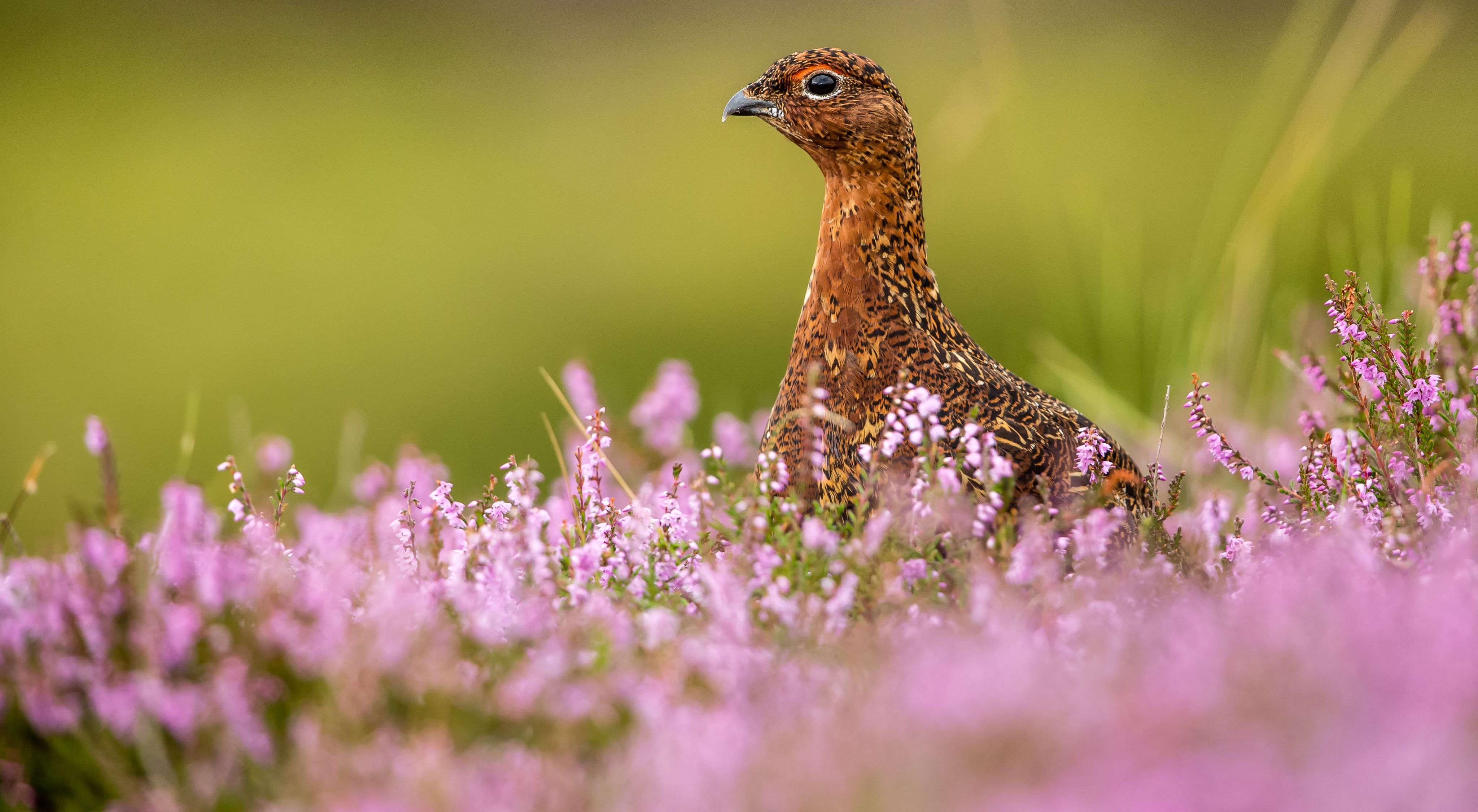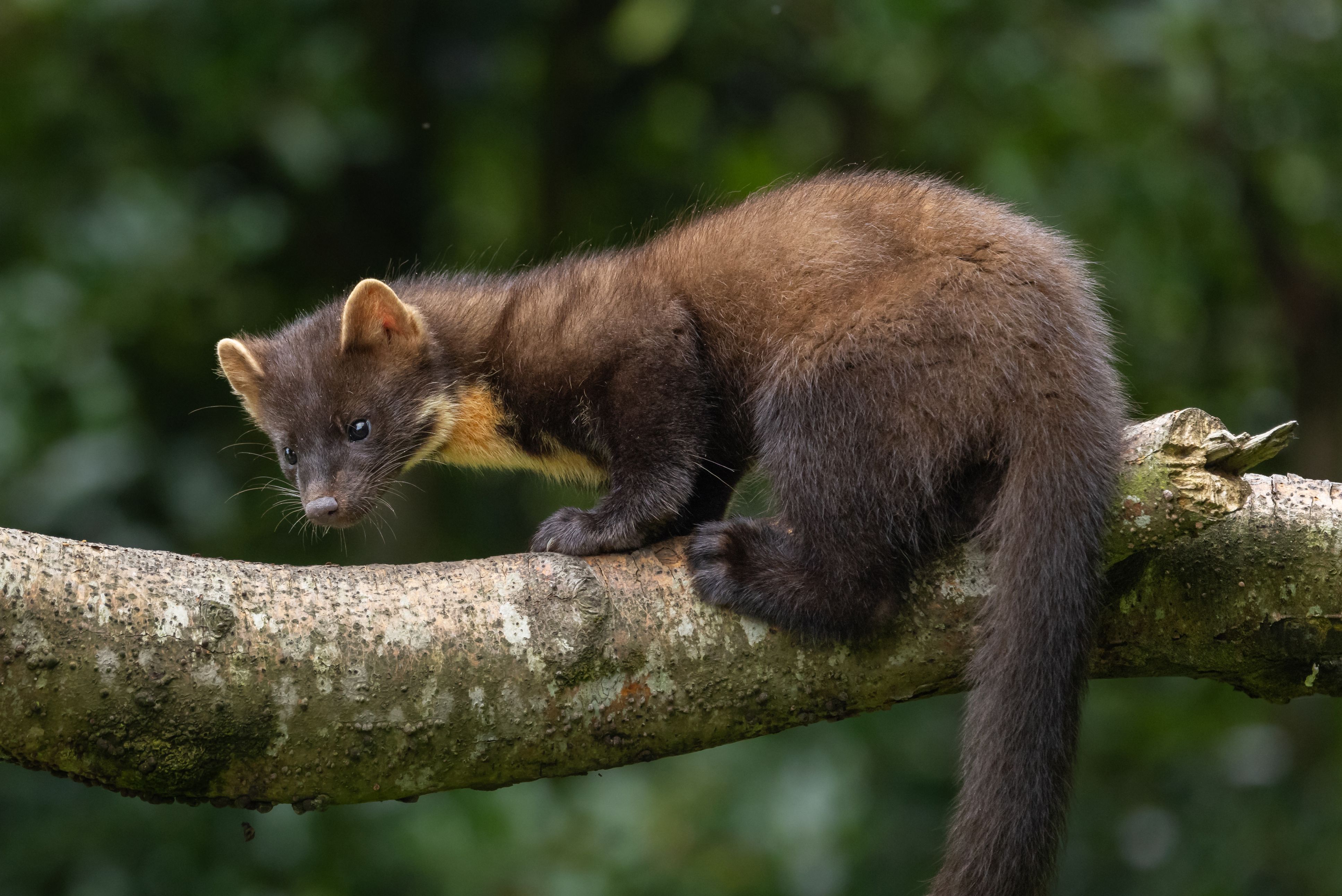Counting on nature
CAs and conservation
Scotland has some of the most extraordinary terrain and wildlife in Europe. Martin Cullen CA and Andrew McIntyre CA are among those working to ensure its survival for future generations. Cris Andrews hears how the great outdoors begins the minute you leave the house
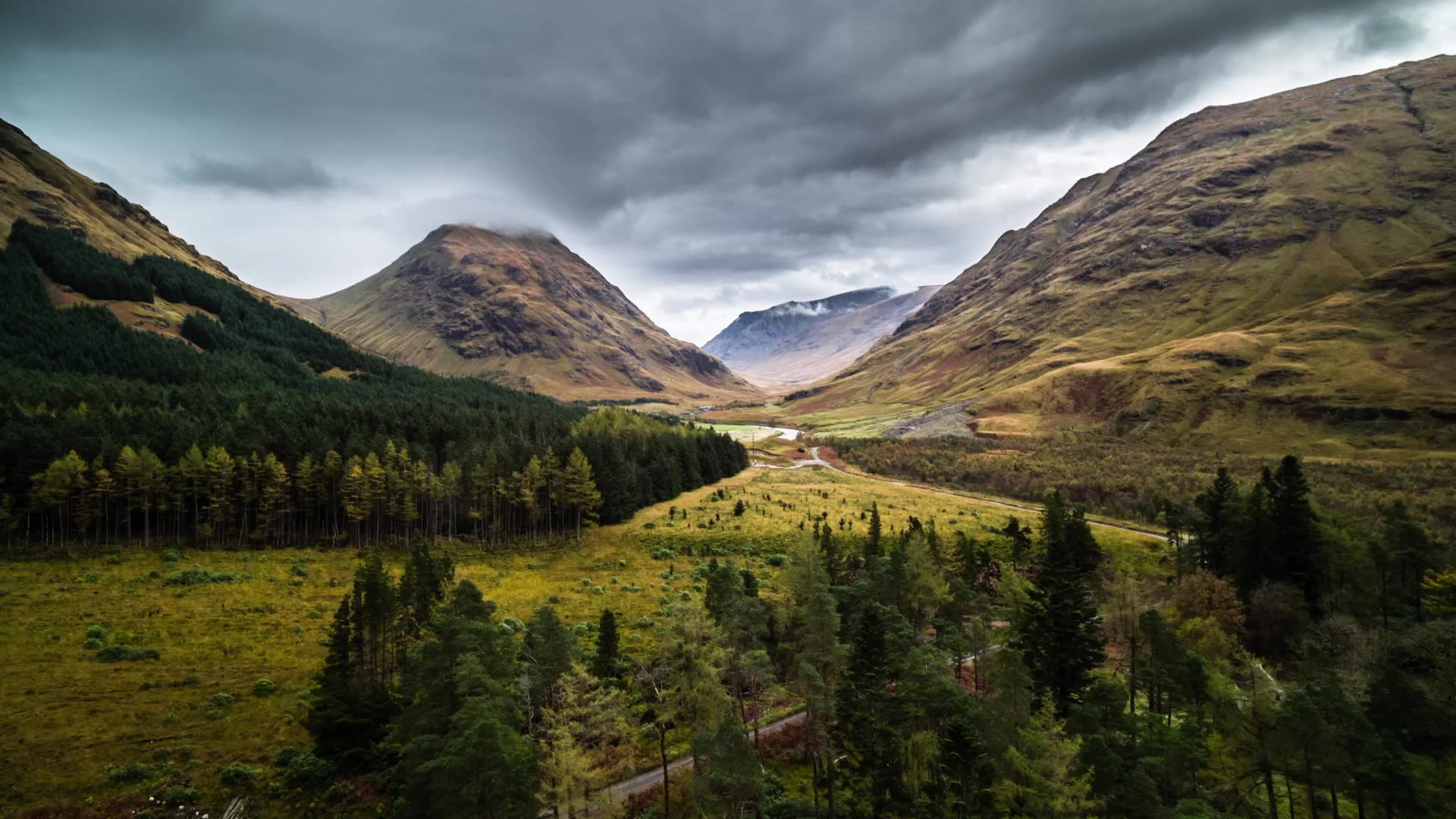
Counting on nature
CAs and conservation
Scotland has some of the most extraordinary terrain and wildlife in Europe. Martin Cullen CA and Andrew McIntyre CA are among those working to ensure its survival for future generations. Cris Andrews hears how the great outdoors begins the minute you leave the house

Escaped lynxes cause media frenzy… Spaceport blast zone threatens otter territories… Sea eagles upset farmers (again)… Possible squirrelpox outbreak in Bridge of Allan… Scotland’s wildlife is seldom out of the news – and nor are the organisations working to protect its exceptional creatures and their habitats.
Money is usually tight, but there’s never a shortage of good work that needs doing. The perfect scenario for CAs to have an impact, then. Not just by helping to balance the books, but also supporting the overall business of wildlife conservation by ensuring its funds are directed to the point of maximum impact.

Martin Cullen CA
Director of Finance and Resources, Scottish Wildlife Trust
I always had a strength in working with numbers, analytics and problem solving. This led me to study accounting at university with the goal of becoming a CA. I ended up focusing more on economics, which I found really interesting.
A recurring theme throughout my university and ICAS studies was the importance of ethics and how it should be embedded in everything we do. It was a combination of that, the university modules covering environmental accounting and economics, and spending much of my time in audit working with charities, which inspired me to seek work in the third sector, and in nature conservation in particular.
Scotland has an amazing breadth of wild places and it’s very rewarding to support the passionate people who are dedicated to looking after them. I was raised in Cumbernauld – known for being an ugly 1950s new town, with lots of grey brutalist architecture – and spent most of my childhood playing computer games or studying. I never appreciated the beauty of Scotland’s wild places until I began my career as an audit trainee, when I trained with colleagues for a charity fundraising hike of the West Highland Way.
You get the most amazing feeling of space among Scotland’s many wild spaces; with enough planning, you can walk for days and not come across a village. When I joined the Scottish Wildlife Trust, I found out that even Cumbernauld has its wealth of green spaces – which we have owned and managed as nature reserves since the 1990s when we were endowed them from the local council. It showed me you don’t have to go 100 miles north to see the great outdoors – it can be found on your doorstep.
Before joining the Scottish Wildlife Trust, I’d spent 13 years at an accounting firm which advised charities across Scotland. I worked in the audit team throughout my time there, which gave me a detailed insight into how charities work, how vital they are for society to function, plugging so many holes, often when understaffed and lacking sufficient resources. When my current role came up, it seemed like a natural career move. Alongside the finance function I oversee HR, ICT, health and safety, and fundraising. It’s a wide remit.
My role is to keep the cogs moving and facilitate people across the trust to achieve its strategy and objectives. I see my directorate as providing the support functions for the trust. I keep myself as flexible and available as I can, and I always diarise my days and weeks ahead, but I accept it will rarely go to plan.
“If we can show the value of nature to the economy, we can get more people and organisations to take ownership of the natural environment and get involved in protecting it”
Martin Cullen CA, Scottish Wildlife Trust
During meetings, I might put forward the financial and other key risks of a particular project. But the trust has a democratic decision-making structure. All of management are encouraged to ask questions and make comments. It’s a collective approach.
We have a lot of multi-year projects. We’re committing to things every day, saying no to things every day, responding to external pressures, such as an outbreak of squirrelpox or if someone lets a lynx loose. What I try to keep sight of amid the daily and short-term actions is the big picture and the long term.
My first month in the job was spent trying to find funding to repair a road into our Largiebaan wildlife reserve, located on the Mull of Kintyre, until recently our second biggest reserve. The trust has been trying to get the project off the ground for decades. It is a huge nature restoration job – we need to fell plantation woodlands, plant indigenous trees and restore peatlands. It has been a great experience to see this project come into action from my first month in the job.
Ecology is linked to the economy; I first learned this studying economics at university. If we can bridge that gap by showing the value of nature to the economy, we can get more people and organisations to take ownership of the natural environment and get involved in protecting it. Wetlands and flood plains, for instance, are both of value to humans as natural flood defences and for nature as a key habitat. So too putting bends back into rivers, which slows the flow of water. It can slow or prevent floods and create vital pockets in river bends, where insects and plants can thrive.
I still enjoy the outdoors when I get time – I’ve bagged 97 Munros so far. On a cycling trip around Europe, in Germany, I saw a flock of storks descend upon a recently ploughed field, like crows and seagulls do over here, except these birds were huge. The first time I saw a sea eagle, I was hiking in the Cairngorms. The eagle was coming in low, about 10 metres above my head. I can see why people call them flying barn doors, they’re so big yet majestic.
The people I work with, their passion for nature is infectious. When you’re travelling all over Scotland, seeing people with that enthusiasm and love for what they do, you come back reinvigorated to do your bit to facilitate their work.
Wildlife conservation – what’s going on?
Possible squirrelpox in Bridge of Allan
Earlier this year, the Scottish Wildlife Trust took reports from people who had seen red squirrels with potential signs of the disease. Around 80% of Britain’s red squirrels now reside in Scotland.
Ice age fly spotted at Mar Lodge estate, Cairngorms
The arctic wave dancer needs cold water to develop and is found in Arctic regions in Finland, Norway and Russia – and now in a high-altitude loch, near Ben Macdui.
Wildlife crime down by 23% in 2022–23, year on year
Stats released by Scotland’s Chief Statistician in February 2025 show levels of reported crimes against wildlife are now back to pre-pandemic levels.
Scottish Wildlife Trust receives £17.5m from a mystery benefactor
The anonymous donation was to turn Inverbroom estate, near Ullapool, into a rewilding sanctuary. The trust has already pledged to ban deer stalking and grouse shooting on the estate.
Pine martens have been reintroduced in western England and Wales
One of Scotland’s iconic animals, the pine marten, related to weasels, otters and badgers, was once common until hunting, trapping and forest clearance wiped it out everywhere except for Scotland (“we even have pine martens in Cumbernauld,” Cullen says) and parts of northern England. Now, following a successful reintroduction in Wales, they can be found in Dartmoor, the Forest of Dean and more.
Andrew McIntyre CA
Finance Director, National Trust for Scotland
I was in the final year of my degree in ancient and medieval history and I couldn’t see any career evolving from that. ICAS offered a conversion course in those days, so I did a one-year post-grad in accounting at Heriot-Watt which qualified me for an ICAS training contract. I was really looking for a broad business qualification and this seemed a great way to do it. In addition to the necessary technical skills, CA training instils strong business ethics, teaches you how to read a business and encourages you to challenge and question organisations.
I joined the National Trust for Scotland in 2022 after a varied career in business and consultancy. The trust has been around for more than 90 years, and if we’re to make sure it’s there for another century it’s vital that the organisation is financially sustainable.
The trust plays an important role in protecting the country’s nature, beauty and heritage. As Finance Director, I lead a team of 22 staff. We work centrally and support the trust regions, each of which has its own regional director and business manager. I also sit on a trust-wide project oversight committee which meets four times a year to look at the progress of our major projects. My role on that group is to make sure financial information is accurate and that each project is aligned with budget and strategy.
The one thing I love most about my job is variety. The National Trust for Scotland has a broad conservation remit. I can be talking about archaeology or wildlife in the morning, gardens or collections in the afternoon. I’m always looking at ways of helping staff fund what they want to do, getting an understanding of what their projects are about.
Our approach to wildlife conservation is to capture as much of what is Scottish as possible, without being heavily weighted on one type of landscape or nature conservation. I lived overlooking Arran for a long time and during my teenage years I’d walk the dogs on the beach at Troon as the sun set. It was very scenic, very atmospheric, looking out at Goatfell, a trust nature reserve on the island. As a child my parents took me to the trust’s properties regularly, in particular Culzean Castle. Today, we get great spotted woodpeckers in our garden at home – very entertaining and beautiful.
“This is the most complicated financial role I’ve known, with levels of complexity that the average business just doesn’t have. But it’s the most rewarding, too”
Andrew McIntyre CA, National Trust for Scotland
The National Trust for Scotland has a variety of income sources – legacies, donations, appeals, membership income, commercial income. It’s a complex financial situation – with over 300 different restricted funds, and a range of bank and investment assets.
I’ve worked in several different industries but never seen so many different revenue streams that have to be understood and managed as there are here, with so many different areas of activity and expenditure.
It’s quite a balancing act. Trust staff who are passionate about their particular area come to you with different ideas and we allocate the expenditure in accordance with our broader objectives.
All trust projects cross the finance team at some point. We support the preparation of the brief, and once it is approved and under way, we monitor it and report on expenditure. We also do post-project analysis to see if a particular venture has achieved its goals.
We also have logistical and human resource challenges to overcome. For instance, it can be difficult – and very expensive – to find staff and contractors to work in rural places and remote islands.
The trust has a comprehensive plan, with about 70 nature-related projects. We’re looking at conserving many species of flowers and plants, and invertebrates such as butterflies and snakes. There are some very small but important things that Scotland had, but does not currently have, and it would be great to have back. The trust supports the Scottish wildcat but I don’t personally have a great wish to see lynx or wolves roaming the Scottish countryside.
This is the most complicated financial role I’ve known, with levels of complexity that the average business just doesn’t have. But it’s the most rewarding, too. I like to think that if I do my job well, a lot of important things can happen, better, that help protect Scotland’s nature, beauty and heritage.
For more on Scottish nature, read our feature with Gary Campbell CA, CEO of the Crofting Commission




